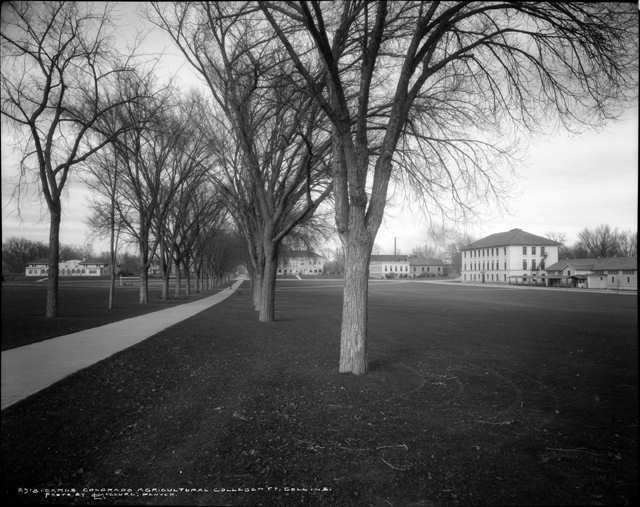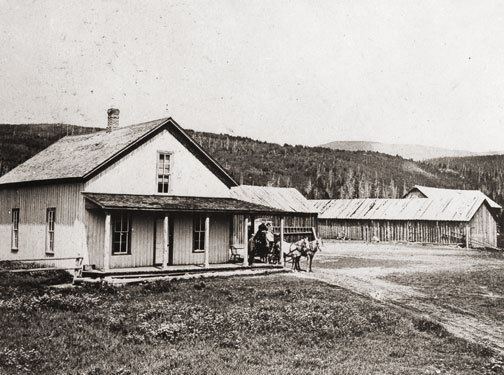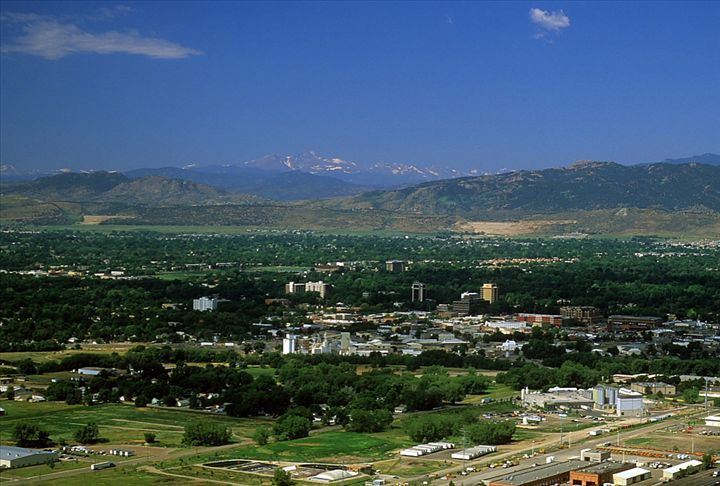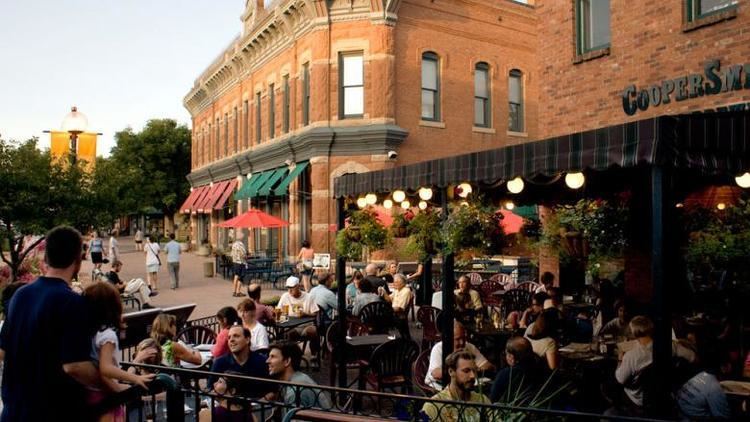Country United States Population 152,061 (2013) Unemployment rate 4.0% (Feb 2015) Area 55.83 sq mi | State Colorado Mayor Wade Troxell | |
Colleges and Universities Colorado State University, Penn State University College of Agricultural Sciences, Hair Dynamics Education Center, Institute of Business & Medical Careers, College America-Fort Collins Points of interest Cache La Poudre River, Fort Collins Museum of Discovery, Horsetooth Reservoir, Horsetooth Mountain, Center for Fine Art Photography | ||
The City of Fort Collins is the Home Rule Municipality that is the county seat and the most populous municipality of Larimer County, Colorado, United States. Situated on the Cache La Poudre River along the Colorado Front Range, Fort Collins is located 65 miles (105 km) north of the Colorado State Capitol in Denver. With a 2012 estimated population of 148,612, it is the fourth most populous city in Colorado after Denver, Colorado Springs, and Aurora. Fort Collins is a midsize college city, home to Colorado State University. It was named Money magazines Best Place to Live in the U.S. in 2006, No. 2 in 2008, and No. 6 in 2010. It is also known as one of the towns that inspired the design of Main Street, U.S.A. inside the main entrance of the many Disneyland-style parks run by The Walt Disney Company around the world.
Contents
- Map of Fort Collins Colorado
- Fort collins colorado best place to live
- Colorado state university students explore fort collins
- History
- Geography and climate
- Culture
- Economy
- Facilities
- Vom fass specialty food stores in fort collins
- Food challenge 50 states burger challenge yankee star
- References
Map of Fort Collins, Colorado
Fort collins colorado best place to live
Colorado state university students explore fort collins
History

Fort Collins was founded as a military outpost of the United States Army in 1864. It succeeded a previous encampment, known as Camp Collins, on the Cache La Poudre River, near what is known today as Laporte. Camp Collins was erected during the Indian wars of the mid-1860s to protect the Overland mail route that had been recently relocated through the region. Travelers crossing the county on the Overland Trail would camp there, but a flood destroyed the camp in June 1864. Afterward, the commander of the fort wrote to the commandant of Fort Laramie in southeast Wyoming, Colonel William O. Collins, suggesting that a site several miles farther down the river would make a good location for the fort. The post was manned originally by two companies of the 11th Ohio Volunteer Cavalry and never had walls.

Settlers began arriving in the vicinity of the fort nearly immediately. The fort was decommissioned in 1867. The original fort site is now adjacent to the present historic "Old Town" portion of the city. The first school and church opened in 1866, and the town was platted in 1867. The civilian population of Fort Collins, led by local businessman Joseph Mason, led an effort to relocate the county seat to Fort Collins from LaPorte, and they were successful in 1868.
The citys first population boom came in 1872, with the establishment of an agricultural colony. Hundreds of settlers arrived, developing lots just south of the original Old Town. Tension between new settlers and earlier inhabitants led to political divisions in the new town, which was incorporated in 1873. Although the Colorado Agricultural College was founded in 1870, the first classes were held in 1879.
The 1880s saw the construction of a number of elegant homes and commercial buildings and the growth of a distinctive identity for Fort Collins. Stone quarrying, sugar-beet farming, and the slaughter of sheep were among the areas earliest industries. Beet tops, an industry supported by the College and its associated agricultural experiment station, proved to be an excellent and abundant food for local sheep, and by the early 1900s the area was being referred to as the "Lamb feeding capital of the world." In 1901 the Great Western sugar processing plant was built in the neighboring city of Loveland.
Although the city was affected by the Great Depression and simultaneous drought, it nevertheless experienced slow and steady growth throughout the early part of the twentieth century. During the decade following World War II, the population doubled and an era of economic prosperity occurred. Old buildings were razed to make way for new, modern structures. Along with revitalization came many changes, including the closing of the Great Western sugar factory in 1955, and a new city charter, adopting a council-manager form of government in 1954. Similarly, Colorado State Universitys enrollment doubled during the 1960s, making it the citys primary economic force by the end of the century.
Fort Collins gained a reputation as a very conservative city in the twentieth century, with a prohibition of alcoholic beverages, a contentious political issue in the towns early decades, being retained from the late 1890s until student activism helped bring it to an end in 1969. During that same period, civil rights activism and anti-war disturbances heightened tensions in the city, including the burning of several buildings on the CSU campus.
During the late 20th century, Fort Collins expanded rapidly to the south, adding new development, including several regional malls. Management of city growth patterns became a political priority during the 1980s, as well as the revitalization of Fort Collins Old Town with the creation of a Downtown Development Authority. In late July 1997, the city experienced a flash flood after and during a 31-hour period when 10–14 in (250–360 mm) of rain fell. The rainfall was the heaviest on record for an urban area of Colorado. Five people were killed and $5 million in damages were dealt to the city. The waters flooded Colorado State Universitys library and brought about $140 million in damages to the institution.
In 2006, Money ranked Fort Collins as the best place to live in America, proclaiming that "great schools, low crime, good jobs in a high-tech economy and a fantastic outdoor life make Fort Collins No. 1." Fort Collins continues to grow in population at a measured pace, with competition from other development in northern Colorado, debate over future growth patterns and town and gown relations emerging as dominant local issues in the early 21st century. In 2012, the city was listed among the 10 best places to retire in the U.S. by CBS Money Watch.
In 2011, Allstate Insurance listed Fort Collins as "Americas Safest Driving City" in their annual "Best Drivers Report". Drivers in Fort Collins average 14 years between collisions and are 26.8% less likely to be in a collision compared to the national average.
Fort Collins is also known along with Marceline, Missouri as one of the towns that inspired the design of Main Street, U.S.A. inside the main entrance of the many Disneyland-style parks run by The Walt Disney Company around the world. Harper Goff, who worked on Main Street, U.S.A. with Walt, showed Walt some photos of his childhood home of Fort Collins, Colorado. Walt liked the look, and so many of the features of the town were incorporated into Main Street, U.S.A.
For more information on local history see the Fort Collins Museum and Discovery Science Centers local historical archives.
Geography and climate
Fort Collins is located at 40°33?33?N 105°4?41?W (40.559238, ?105.078302). The city is situated at the base of the Rocky Mountain foothills of the northern Front Range approximately 60 miles (97 km) north of Denver, Colorado and 45 miles (72 km) south of Cheyenne, Wyoming. Elevation is 4,982 ft (1,519 m) above sea level. Geographic landmarks include Horsetooth Reservoir and Horsetooth Mountain—so named because of a tooth-shaped granite rock that dominates the citys western skyline. Longs Peak can also clearly be seen on a clear day to the southwest of the city.

According to the United States Census Bureau, the city has a total area of 47.1 square miles (122 km2), of which 46.5 square miles (120 km2) is land and 0.6 square miles (1.6 km2), or 1.27%, is water. The Cache La Poudre River and Spring Creek run through Fort Collins.
Located along the Front Range of the Rocky Mountains, Fort Collins experiences a semi-arid climate (Koppen BSk), with four distinct seasons and low annual precipitation. Summers range from mild to hot, with low humidity and occasional afternoon thunderstorms. Winters range from mild to moderately cold. The city experiences lots of sunshine, with 300 days of sunshine per year and 19 days with 90° + weather. The average temperature in July, the warmest month, is 71 °F (22 °C). The average temperature in January, the coldest month, is 29 °F (?2 °C). Annual snowfall averages 59 inches (1.5 m), and can occur from early September through the end of May. Average precipitation overall is 15.9 inches (400 mm).
Culture

Much of Fort Collinss culture is centered on the students of Colorado State University. The city provides school year residences for its large college-age population; there is a local music circuit which is influenced by its college town atmosphere and is home to a number of well known microbreweries. The Downtown Business Association hosts a number of small and large festivals each year in the historic Downtown district, including Bohemian Nights at NewWestFest in late summer, which features local cuisine, music, and businesses. The Fort Collins Lincoln Center is home to the Fort Collins Symphony Orchestra and regularly attracts national touring companies of Broadway plays.

The citys thriving beer culture supports many microbreweries: the New Belgium Brewing Company, the Odell Brewing Company, the Fort Collins Brewery, Equinox Brewing, Funkwerks, Horse & Dragon Brewery, Pateros Creek Brewing Company, Zwei Bruder Brewing, and 1933 Brewing. New Belgium is the largest of the local craft-breweries, with national distribution from California to states east of the Mississippi. The largest brewer in the world, Anheuser-Busch, also has a brewery northeast of the city near I-25. There are several brewpubs, including the original C.B. & Potts Restaurant and its Big Horn Brewery, CooperSmiths Pub & Brewing, a local mainstay since 1989, Pitchers Brewery, and Black Bottle Brewery.
The Colorado Brewers Festival is held in late June annually in Fort Collins. The festival features beers from as many as 45 brewers from the state of Colorado and averages around 30,000 attendees. New Belgium Brewery also hosts the Tour de Fat which draws over 20,000 people riding bikes and dressing in costume. As well as a series of Bike in movies starting late September.
The Colorado Marathon is a yearly event running down the Poudre Valley and finishing in Downtown Fort Collins.
The principal venue for the performing arts in Fort Collins is the Lincoln Center, 417 W. Magnolia St., at Meldrum Street. Built in 1978, the center includes the 1,180-seat Performance Hall and the 220-seat Magnolia Theatre, as well as four exhibit galleries and an outdoor sculpture and performance garden. It is home to many local arts groups, including the Fort Collins Symphony, Opera Fort Collins, Canyon Concert Ballet, Larimer Chorale, Youth Orchestra of the Rockies, OpenStage Theatre and Company, Foothills Pops Band and the Fort Collins Childrens Theatre. Concert, dance, childrens, and travel film series are presented annually. The center is wheelchair-accessible and has an infrared sound system for the hearing-impaired. Ticket prices vary considerably, but childrens programs are often free or less than $10, and big name acts and Broadway shows are $18 to $36. The center hosts nearly 1,750 events each year.
The Fort Collins Museum, established in 1941, is a regional center focusing on the culture and history of Fort Collins and the surrounding area. The Fort Collins Museum houses over 30,000 artifacts and features temporary and permanent exhibits, on-going educational programs and events, and is home to four historic structures located in the outdoor Heritage Courtyard.
The arts are represented by The Center for Fine Art Photography, University Center for the Arts, Fort Collins Museum of Art (FCMOA), the Arts Incubator of the Rockies (AIR), and the Bas Bleu Theatre Company.
Economy
Fort Collins economy has a mix of manufacturing and service-related businesses. Fort Collins manufacturing includes Woodward Governor, Anheuser-Busch, and Otterbox. Many high-tech companies have relocated to Fort Collins because of the resources of Colorado State University and its research facilities. Hewlett Packard, Intel, AMD, Avago, Beckman Coulter, National Semiconductor, LSI, Rubicon Water and Pelco all have offices in Fort Collins. Other industries include clean energy, bioscience, and agri-tech businesses.
